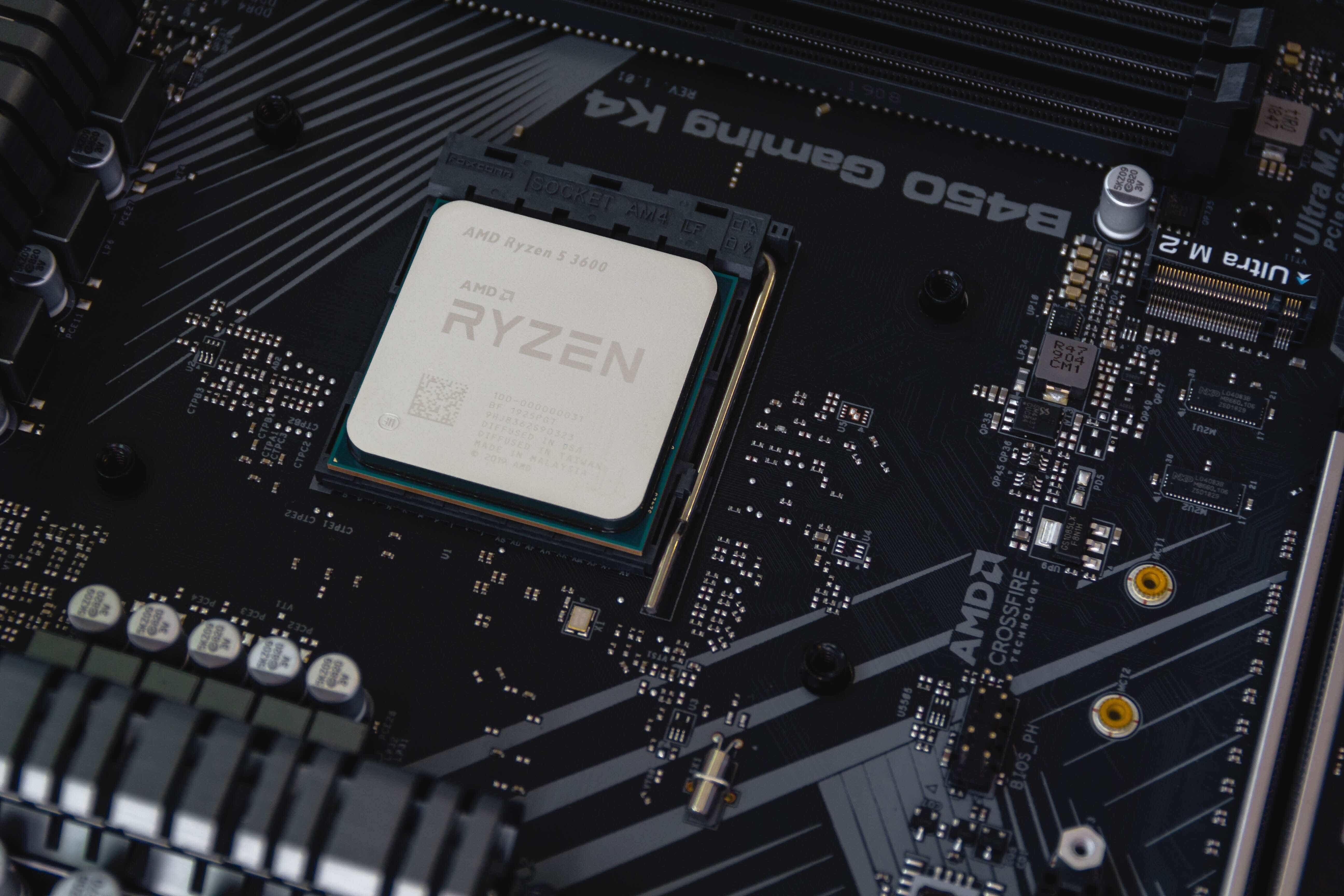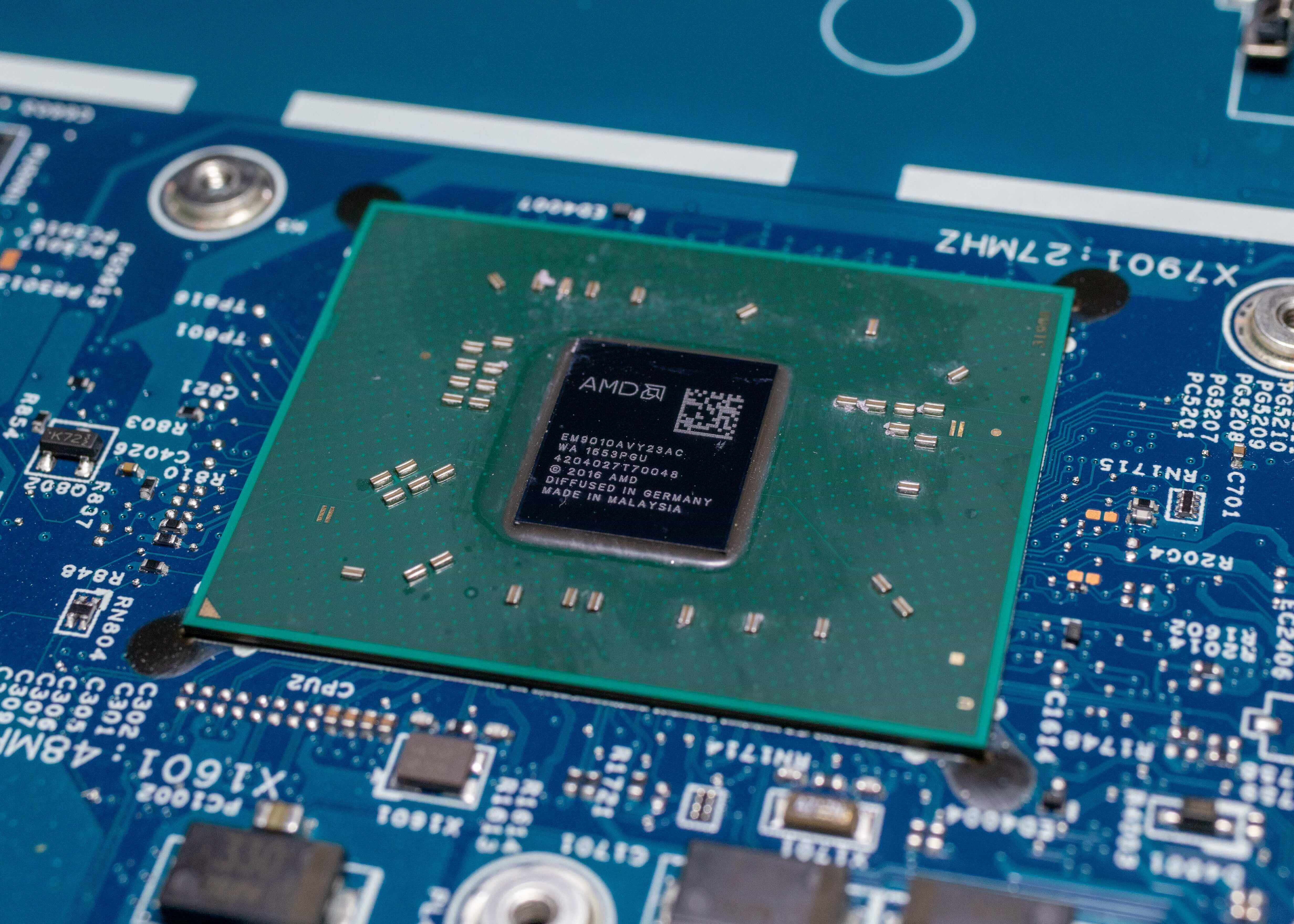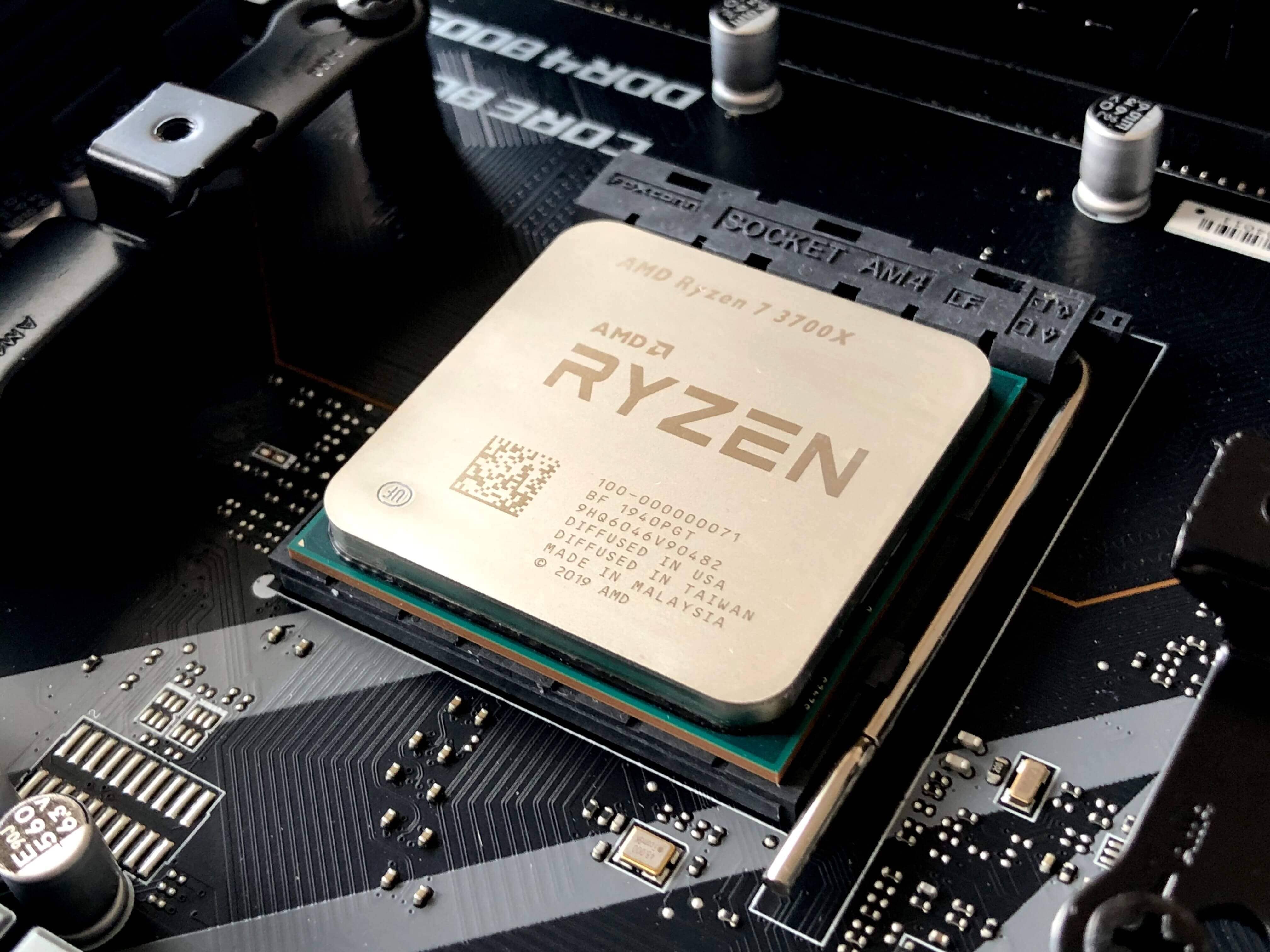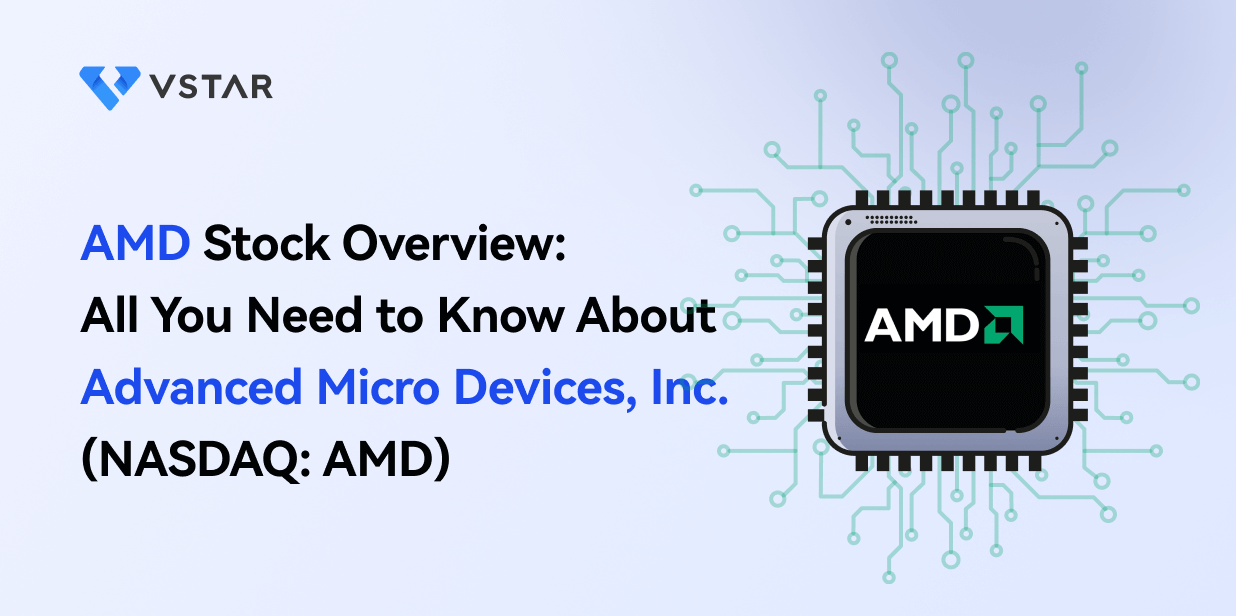The thriving future of numerous industries rests on Advanced Micro Devices' (NASDAQ: AMD) ability to produce cutting-edge computing components. Amidst challenging times for the economy in 2022, AMD experienced a decline of epic proportions with their stocks dropping by a staggering rate of 55%. There's no better moment than now to dive deep into learning about this forward-thinking business since the stock continues to demonstrate signs of recovery. Familiarize yourself with the crucial details about this resurging company.
I. Advanced Micro Devices, Inc.'s Overview
AMD continues to be a leading provider of adaptable computing technology through its investment in technologies that enable the creation of products and services aimed at solving complex global challenges.
The journey of AMD started when Jerry Sanders founded the company as a Silicon Valley start-up back in 1969 with the aid of many enthusiastic workers who all shared his vision for developing top-class semiconductor products. Advanced Micro Devices (AMD) is an American multinational semiconductor company based out of Santa Clara that develops computing processors along with other associated technologies to cater to both professional and personal market demands.
AMD has a $168 billion market capitalization which increased by 64.23% in a year. AMD, which is now rated number 72, has cemented its spot among the top 100 companies in the world.
Throughout its history, AMD has achieved several key milestones, including the development of the first x86-based microprocessor and the acquisition of graphics card manufacturer ATI Technologies. Today, AMD is organized into two business segments: Computing and Graphics, and Enterprise, Embedded and Semi-Custom. Under the leadership of Dr. Lisa Su, AMD has successfully expanded into new markets and has become a major player in the semiconductor industry.
II. Advanced Micro Devices, Inc. (AMD) - A Look at the Business Model and Semiconductor Product Line
A. Inside AMD's High-Performance Semiconductor Business Model
AMD develops high-performance chips for a range of industries, including PCs, servers, and gaming systems. In recent years, AMD has reemerged as a leader in CPUs, GPUs, and other technologies with innovative new product lines.
To generate revenue, AMD sells processors and components to PC makers, data center operators, and gaming companies. This diversified set of customers allows AMD to generate stable revenue streams. Furthermore, AMD invests in adaptable computing technology to create products and services aimed at solving complex global challenges.
B. AMD's Cutting-Edge Semiconductor Product Line: CPUs, GPUs, and More
AMD offers a wide range of products and services designed to cater to both personal and professional market demands. Its product lines include:
- CPUs - AMD's Ryzen and Thread Ripper processors are designed for personal computers and workstations, while its EPYC processors are designed for data centers and servers.
- GPUs - AMD's Radeon graphics cards are designed for gaming systems and high-performance computing, while its Radeon Instinct accelerators are designed for data centers and deep learning applications.
- Semi-Custom SoCs - AMD's semi-custom system-on-chip solutions are designed for a variety of applications, including gaming consoles, smart home devices, and more.
- Other Components - AMD also produces chipsets, motherboard components, and other related technologies that support its core product lines.

III. AMD's Financials, Growth, and Valuation Metrics
A. Review of AMD's financial statements
The last five years has seen AMD's revenue experience notable growth. The business had a revenue of $6.48 billion back in 2018 and has since increased significantly. Even with the recent economic meltdown, the company's revenue currently still stands at an astounding $23.6 billion. The fact that AMD was able to sustain considerable revenue growth despite a decline in demand for PCs due to COVID-19 demonstrates its noteworthy flexibility in adjusting and redirecting its business operations toward more lucrative sectors.
The financial performance of AMD has seen an increase of 43.61% as compared to last year, and they made $23.60 billion in total revenue for the fiscal period ending in 2022 indicating that the stock price gained value.
Total assets on the year's balance sheet rounded up at $67.58 billion, with an incredible growth rate of 444.17%, as stated on official financial reports. However, total liabilities experienced a significant increase, climbing up to $12.83 billion. The company's cash reserves along with its short-term investments have seen an admirable boost, increasing by 62.8%, resulting in a new total balance of $5.86 billion.
For the year under consideration, both ROA and ROC stood at rates of 1.98% and 2.40%, respectively.
Going by the details mentioned in the cash flow statement for 2022, there is an outstanding increase of approximately $230 billion and a significant percentage growth rate of around 144.68% when compared to the previous fiscal year. But as for investment revenues, they rose greatly, with an impressive margin of almost 400%, which held firmly at around two billion dollars.
The amount of traded shares for AMD Stock averaged out to be around 57.30 million dollars, despite having a high AMD PE ratio of 394.10.
B. Key Financial Ratios And Metrics
When considering the investment potential of AMD stock, it is important to compare key financial ratios and metrics with those of its largest tech peers, such as Nvidia. Despite both companies experiencing declines in their stock prices by over 50% in 2022 due to the decrease in PC component spending, there are several reasons why AMD is a better investment than Nvidia.
Firstly, while worldwide shipments of GPUs fell by 42% throughout 2022, AMD's 89% market share in consumer GPUs allowed it to fare better than Nvidia's 88%. As a result, in fiscal 2022, AMD's revenue increased by an impressive 43.6% year over year to $23.6 billion.
Moreover, AMD's distribution of revenue across different segments allowed it to pivot to more lucrative areas, such as data centers and embedded products, when its PC-centered segments suffered last year. The combined revenue growth of these segments was 169% year over year, reaching $10.5 billion in 2022. While Nvidia also has prospects in high-growth markets like AI and data centers, AMD's diversity makes it a stronger and more reliable business.
IV. AMD Stock Performance
If you're looking for a stock with long-term growth potential, AMD (Advanced Micro Devices) should be on your radar. Despite near-term headwinds, AMD's focus on data centers, artificial intelligence, and specialized chips positions it for future success. Let's take a closer look at AMD's trading information, stock performance, key drivers, and future prospects.
A. AMD Trading Information
AMD was first listed on the NASDAQ stock exchange in 1979 under the ticker symbol AMD. It's based in the United States and trades in U.S. dollars. Trading hours are from 9:30 a.m. to 4:00 p.m. EST. Pre-market and after-market trading hours are from 4:00 a.m. to 9:30 a.m. EST and 4:00 p.m. to 8:00 p.m. EST, respectively.
The company has undergone four stock splits, the first one was in 1980 and the last one in 2000.
AMD Dividend
As for dividends, AMD does not currently pay a dividend to its shareholders.
AMD News
Investors and traders should take note of a few recent developments at AMD. First, the company's acquisition of Xilinx was completed in early 2021, which positions AMD to better compete with rival Intel in the data center market. Second, AMD announced recently that it had developed a new AI accelerator chip, the AMD MI200, which could offer significant gains in performance for data centers and AI applications. Third, AMD has continued to dominate the console chip market, supplying chips to both Microsoft's Xbox Series X|S and Sony's PlayStation 5. Finally, AMD has announced partnerships with several cloud providers, including Google and Microsoft, which could lead to increased sales of its data center chips.
B. Overview of AMD Stock Performance
AMD Stock Price History
In recent times, AMD stock has displayed significant turbulence, but with strong sales of AMD's Ryzen processors and Radeon graphic cards, AMD stock, which had sharply declined late into the year of 2018, showed massive growth throughout both years that followed. While it is true that the stock encountered some problems in 2021, such as supply chain disruptions and a worldwide semiconductor scarcity. 2023 has been impressive for the stock so far, with a current value of around $95 per share.
C. Key Drivers of AMD Stock Price

AMD stock price is influenced by several key drivers, including:
Data center sales: As companies continue to shift more of their computing power to the cloud, demand for data center chips is expected to grow. AMD's acquisition of Xilinx positions it to better compete with Intel in this market. The shift towards cloud computing has created a massive opportunity for companies like AMD in the data center chip market.
AMD's EPYC processors, which are specifically designed for data center use, have already gained significant traction in the market. In fact, AMD's data center revenue increased by 286% compared to the same period in the previous year. This growth is likely to continue as more companies move their computing power to the cloud, making AMD an attractive investment for those looking to capitalize on this trend.
AI applications: AI is becoming increasingly important across many industries, and demand for high-performance AI chips is expected to increase. AMD's focus on developing AI accelerator chips could lead to increased sales in this market. These chips are designed specifically to handle the complex computations required for AI applications, and they offer significant performance advantages over traditional processors.
AMD's MI100 accelerator is one of the fastest AI accelerators on the market. The company has also been working closely with major tech companies like Google and Microsoft to optimize its chips for use in their AI systems. As AI becomes increasingly important across many industries, the demand for high-performance chips is likely to grow, making AMD a potentially lucrative investment for those looking to capitalize on this trend.
Custom chips: AMD has become a go-to supplier of custom chips for various devices, including game consoles. AMD's dominance in the game console market has helped offset declines in consumer GPU sales, and the company's success in this area has led to other custom chip deals as well. For example, AMD is now supplying chips for several handheld gaming devices, and there are rumors that Nintendo may switch from Nvidia chips to AMD's with its next console. Custom chips are an attractive market for AMD because they offer higher profit margins than traditional processors, and the company's success in this space could help drive long-term growth.
D. Analysis of Future Prospects for AMD Stock Forecast
Despite short-term headwinds, AMD's prospects for long-term growth look promising. The company's focus on data centers, AI, and specialized chips positions it well to capitalize on trends in the tech industry. Is AMD a buy? Analysts have an average 12-month AMD target price of $101 for AMD, which is 24% higher than its current position. This suggests that the company's stock still has room for growth.
V. Risks and Opportunities
A. Potential risks facing AMD
AMD's primary worry when it comes to potential risks is its competitors and their business approach, as competing against companies like NVIDIA and Qualcomm can be challenging for any semiconductor firm. To remain competitive in the industry against rivals such as Intel and Nvidia, it is essential that AMD maintain its momentum and growth trajectory.
Even though AMD has a leg up on the competition, it must always come up with ground-breaking new products to keep its dominant market share.
Overcapacity in semiconductors, disruptions in the supply chain, pricing pressure, and a slowdown in revenue and profit growth are further threats. Demand and profits may also be jeopardized by economic downturns.
B. Opportunities for growth and expansion
Despite the risks, there are many opportunities for growth and expansion for AMD. The company could continue to see growth in areas such as PCs, servers, gaming, AI, and autonomous vehicles. New products and strategic M&A/partnerships could also help boost growth in these areas. However, macro risks exist, such as changes in global trade policies and economic uncertainty.
In terms of future outlook and expansion, AMD's success will largely depend on its ability to continue to innovate and stay ahead of the competition. The company needs to continue to focus on its core strengths, such as custom chip design and AI capabilities, while also exploring new growth opportunities in emerging technologies. Additionally, strong financials and a healthy balance sheet will be key to funding the company's growth and expansion initiatives.

VI. How To Invest In AMD Stock
A. Three ways: Hold its share; Option; CFD
The three major strategies to invest in AMD stock are to hold its shares, use options, or trade contracts for difference (CFDs). Holding shares is a straightforward way to invest in the stock, but it requires a larger upfront investment and does not offer as much flexibility as options or CFDs. Options can provide investors with greater flexibility, as they can be used to speculate on price movements or hedge existing positions. However, options can be complex and require more experience to be used effectively. CFDs allow investors to trade on price movements without owning the underlying asset, and can offer leverage and the ability to go long or short, allowing investors to profit from both upward and downward price movements. The main benefit of CFDs is that they offer greater flexibility and more opportunities for profit, making them a popular choice for traders.
B. Why Trade AMD Stock CFD with VSTAR
VSTAR provides a user-friendly platform with advanced trading tools and competitive pricing, making it easy to get started. With a minimum deposit of only $50, it is accessible to investors of all levels. VSTAR offers the lowest trading costs, enabling investors to maximize their returns. Negative balance protection ensures that traders cannot lose more than their initial deposit. VSTAR's real-time market data allows traders to catch trading opportunities quickly and efficiently. Finally, with 10 seconds to explore a $100,000 risk-free demo account, traders can test their strategies and gain confidence before investing real money. Sign up with VSTAR and start trading AMD stock CFDs today.


Conclusion
Advanced Micro Devices, Inc. (AMD) has made a remarkable comeback in the semiconductor industry. With strong financial performance, outperforming products, and successful expansion into new markets, AMD is well-positioned for continued growth.
Traders looking to profit from AMD's growth story have several options, including investing in the company's stock, trading options, or trading CFDs..
As always, it is important to conduct thorough research and analysis before making any investment decisions, especially in a highly competitive market like AMD's. By doing so, traders can make informed decisions and potentially profit from AMD's comeback story.
FAQs
1. Is AMD a Buy, Sell or Hold today?
Hold, AMD is trading around $170 per share, which is near its 52-week high. The fundamentals remain strong, but the stock may be due for a pullback in the near term.
2. Does AMD pay a dividend?
No, AMD does not currently pay a dividend on its common stock.
3. What is the fair price for AMD stock?
Based on AMD's growth prospects, profitability, and market position, a fair valuation is around $160 per share.
4. What is the AMD stock forecast for 2025?
If AMD continues gaining data center and PC chip market share as expected, the stock could reach around $250 by 2025 through revenue and earnings growth. Competition with Intel will remain fierce.


















